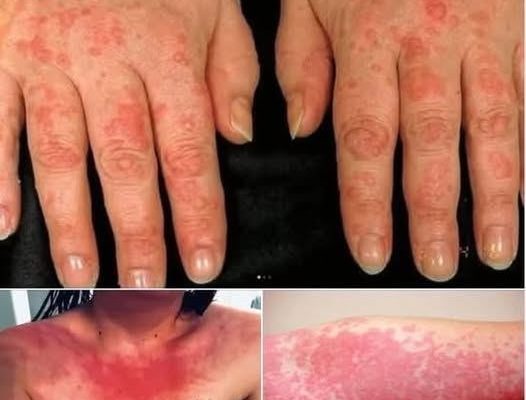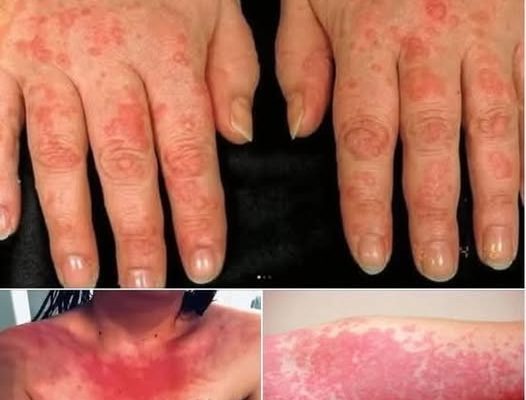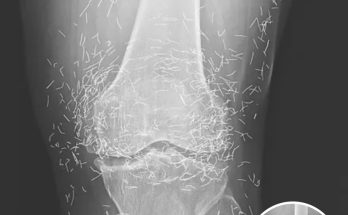Decoding Your Skin’s SOS: Understanding Sweating, Itching, and Redness
Is your skin sending you distress signals? Unexplained sweating, persistent itching, and redness aren’t just minor inconveniences; they can be symptoms of underlying health concerns, ranging from simple irritations to more serious conditions. This comprehensive guide will illuminate the common causes, provide effective strategies for relief, and guide you on when to seek professional medical advice.
Common Culprits Behind Skin Discomfort
Several factors can trigger the uncomfortable trio of sweating, itching, and redness. Let’s explore some of the most frequent culprits:
1. Contact Dermatitis: When Your Skin Reacts to its Environment
Contact dermatitis, a common form of eczema, arises when your skin encounters a substance it’s sensitive to. This reaction can stem from an allergic response (allergic contact dermatitis) or direct irritation (irritant contact dermatitis).

Typical triggers include harsh soaps and detergents, strongly scented cosmetics and perfumes, certain metals like nickel found in jewelry, latex or rubber products, and even particular fabrics or dyes. The resulting symptoms include inflamed, red skin, intense itching and burning sensations, and potentially blisters or dry patches. These symptoms typically appear only in the area that came into contact with the irritant.
What to do? The most crucial step is identifying and eliminating the offending substance. Gentle, fragrance-free moisturizers can provide relief. Over-the-counter topical corticosteroids can be helpful, but always consult a pharmacist or doctor before using them. For persistent or severe cases, a dermatologist’s expertise is essential.
2. Heat Rash (Miliaria): Trapped Sweat’s Uncomfortable Consequence

Heat rash, also known as miliaria, occurs when sweat ducts become blocked, leading to sweat being trapped beneath the skin’s surface. Hot, humid weather and strenuous physical activity significantly increase the likelihood of developing this condition.
Characterized by small, red or clear bumps, a prickling or stinging sensation, and itchy skin (especially under clothing or in skin folds), heat rash often appears on the chest, back, neck, or armpits.
What to do? Keeping the affected area cool and dry is key. Choose loose-fitting clothing, avoid overheating, and let the condition resolve naturally – it usually clears up within a few days.
:quality(85):upscale()/2024/07/17/643/n/1922153/b734bdbd6697d4ae3bfd60.11441998_.jpg)
3. Allergic Reactions: Your Immune System’s Overreaction
Allergic skin reactions can manifest in various ways, triggered by diverse allergens such as food, insect bites, medications, pollen, dust mites, or pet dander.
Watch out for hives (raised, itchy welts), red patches or blotchy skin, and swelling. In severe cases, difficulty breathing or swallowing can occur, demanding immediate medical attention.
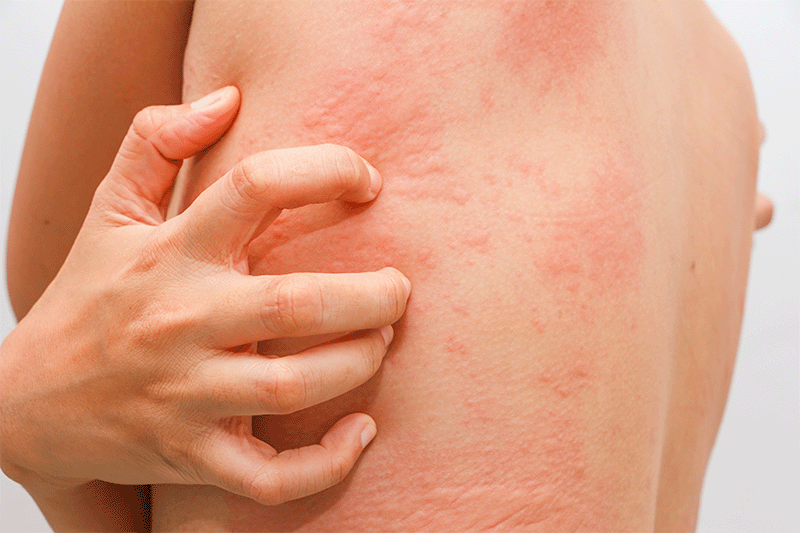
What to do? Antihistamines can provide relief from mild symptoms. However, if you experience swelling of the lips, tongue, or airways, seek immediate medical help. Identifying and avoiding the allergen is crucial for long-term management.
4. Fungal Infections: Thriving in Warm, Moist Environments
Fungal infections, like ringworm (tinea), athlete’s foot, and yeast infections, flourish in warm, damp environments. Individuals who sweat profusely or wear tight, non-breathable clothing are particularly susceptible.
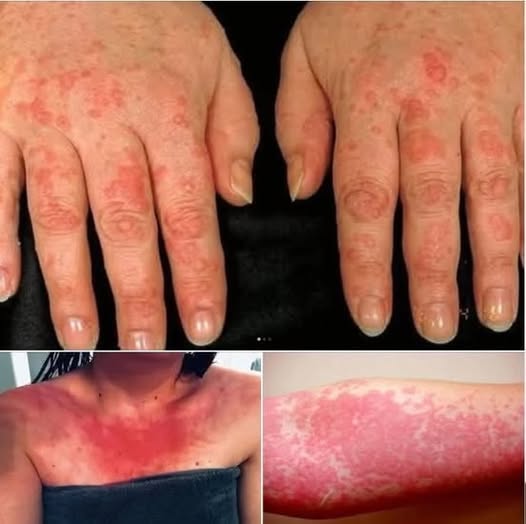
Look for itchy, red, circular patches with raised edges, peeling or cracked skin, and a burning or stinging sensation. These infections often appear on the feet, groin, or underarms.
What to do? Maintaining a clean and dry skin surface is paramount. Antifungal creams or powders can be effective, but persistent or severe infections require a doctor’s intervention for prescription medication. Avoid sharing personal items to prevent the spread of infection.
5. Hyperhidrosis: Excessive Sweating Beyond Normal Regulation

Hyperhidrosis is a condition marked by excessive sweating that surpasses the body’s needs for temperature regulation. It might affect specific areas (hands, feet, armpits) or be more widespread.
Persistent sweating, even in cool environments, skin irritation from constant moisture, and an increased risk of fungal or bacterial infections are all common symptoms. The emotional and social distress caused by hyperhidrosis should not be underestimated.
What to do? Treatment options vary depending on severity and include clinical-strength antiperspirants, oral medications, Botox injections, and even surgical procedures. A dermatologist can help you determine the best course of action.
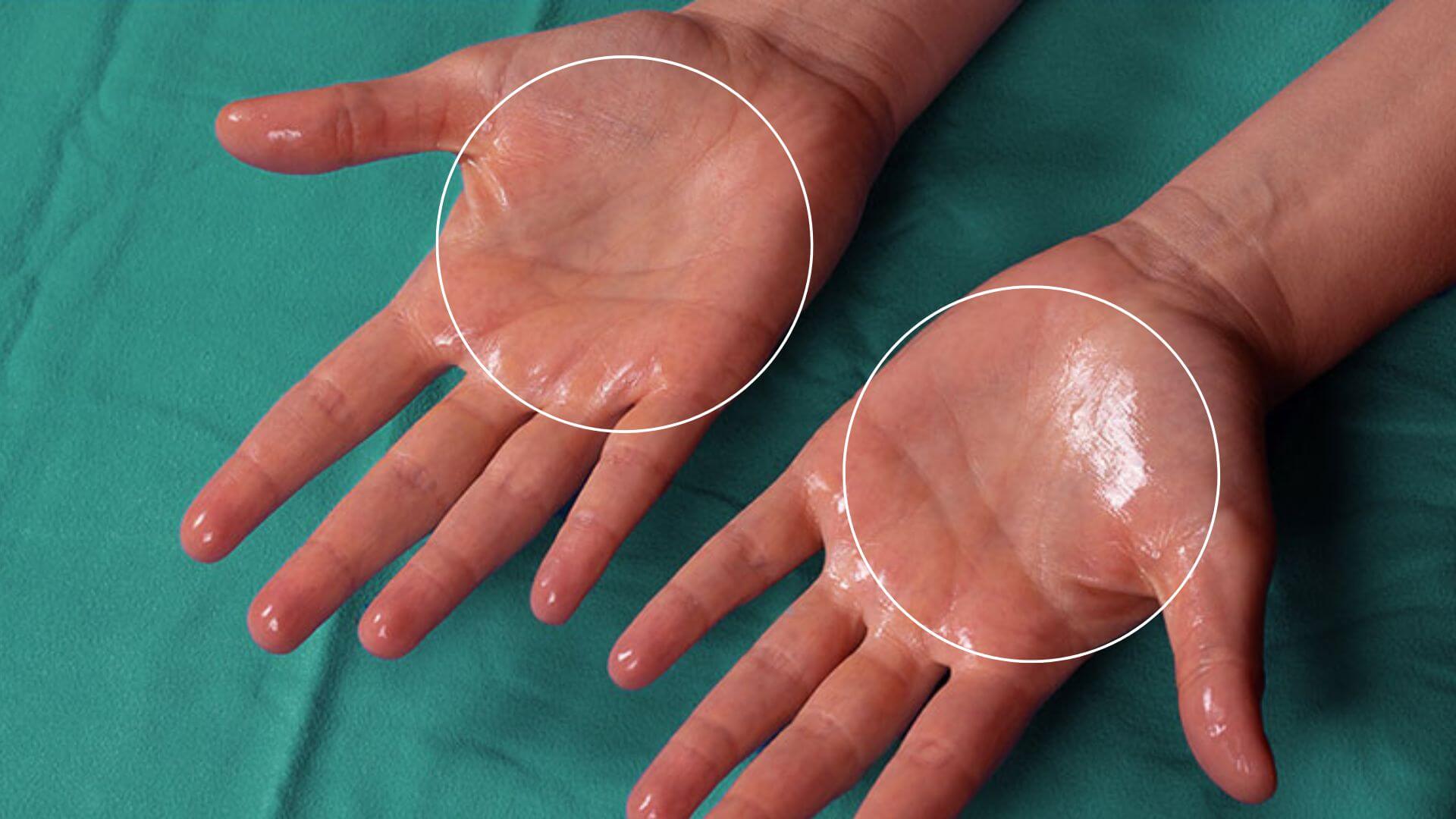
6. Eczema (Atopic Dermatitis): Chronic Skin Inflammation
Eczema is a chronic inflammatory skin condition causing inflamed, itchy, and dry skin. It tends to flare up periodically and is frequently associated with asthma or hay fever.
Expect to see red, dry, scaly patches, intense itching, and skin thickening or cracking from scratching. Commonly affected areas include the elbows, knees, face, and neck.
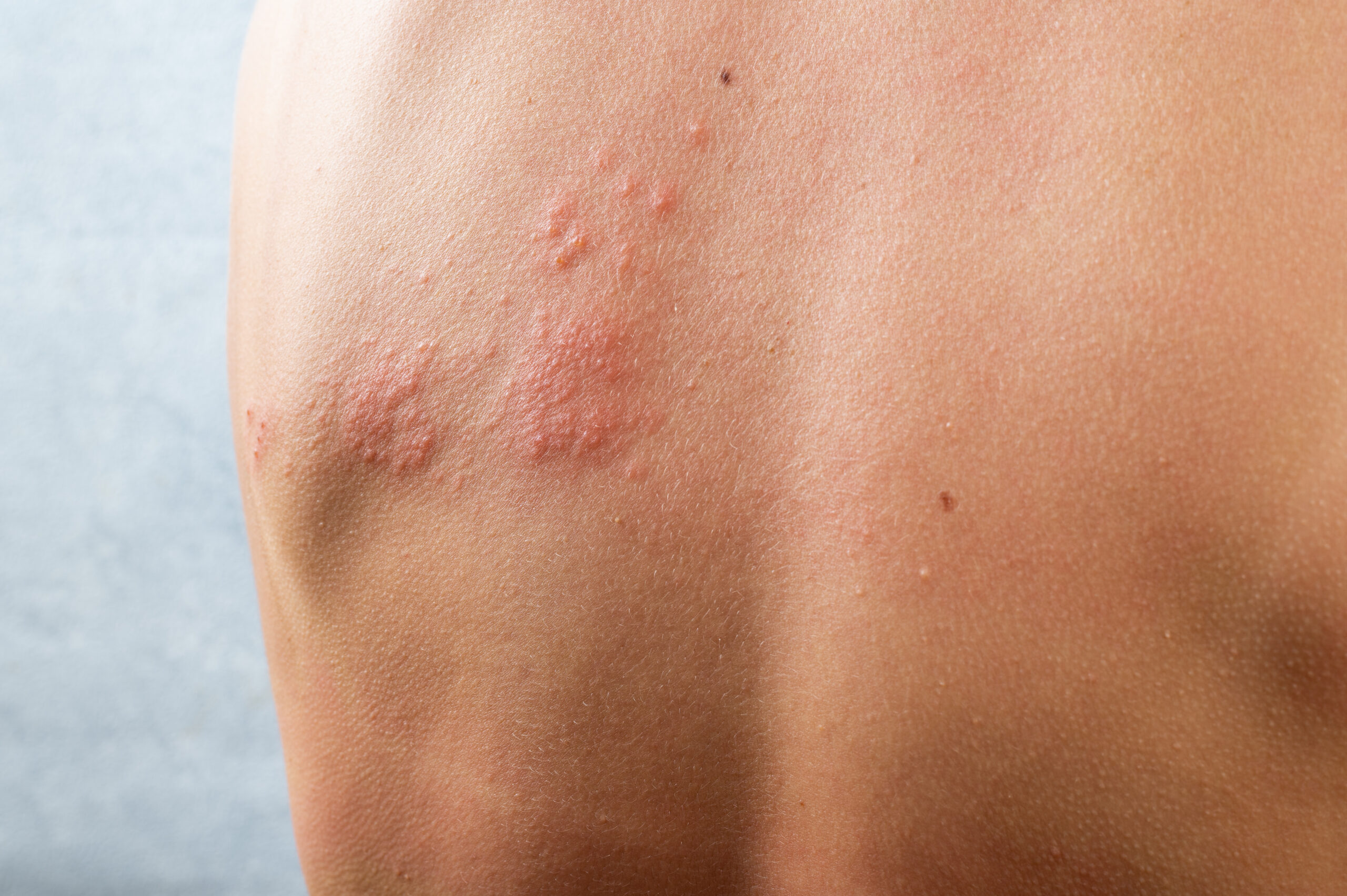
What to do? Regular moisturizing with emollient creams, avoiding known triggers (allergens, stress), and using prescribed topical treatments are vital for management. While not contagious, eczema requires ongoing care.
7. Psoriasis: Accelerated Skin Cell Growth
Psoriasis is an autoimmune disease accelerating the skin cell life cycle, resulting in rapid cell buildup on the skin’s surface.
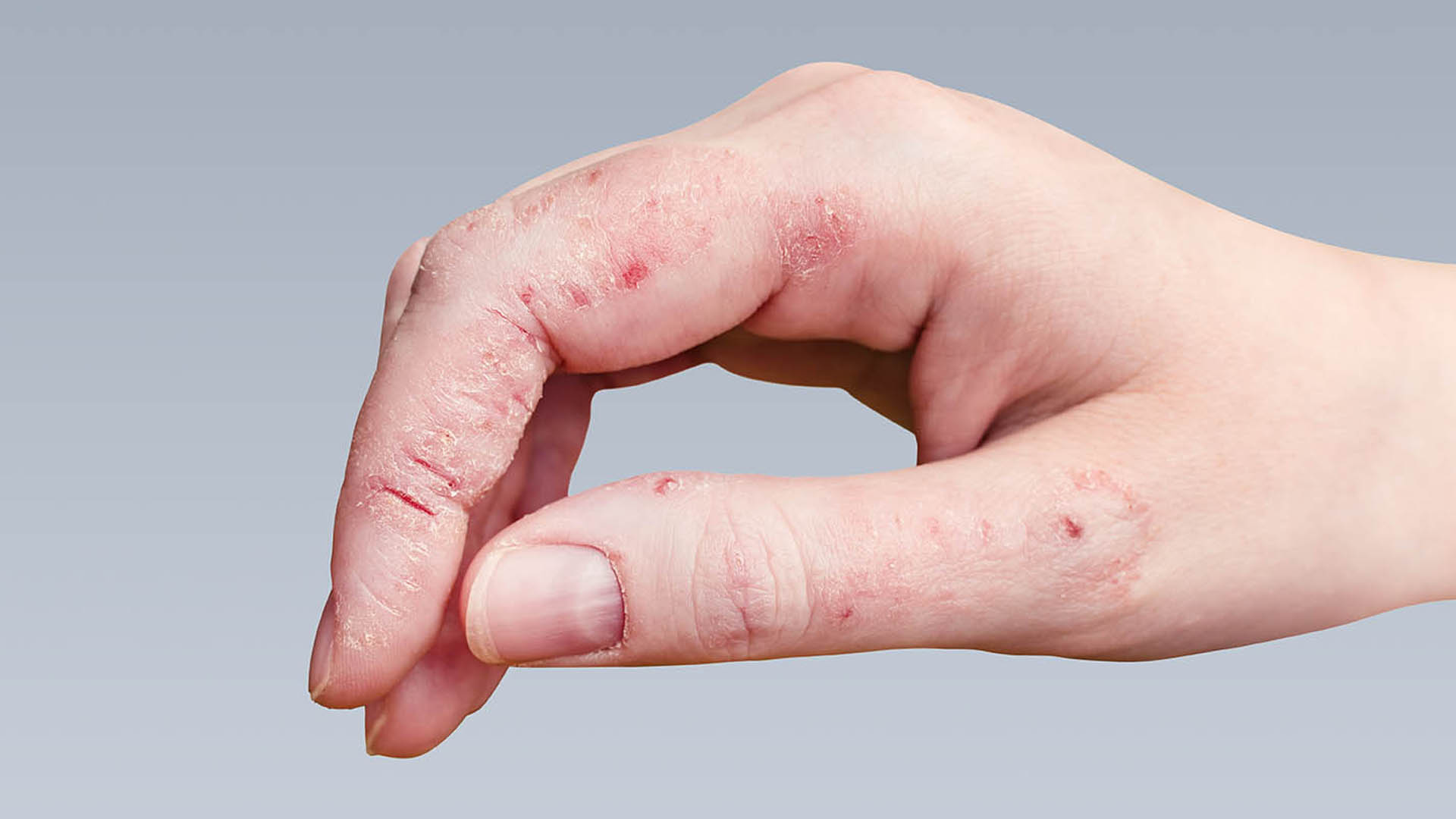
Thick, red patches covered with silvery-white scales, along with itching or burning, are characteristic symptoms. Common locations include the scalp, elbows, knees, and lower back.
What to do? Treatments encompass topical creams, phototherapy, and immune-modulating medications. While incurable, psoriasis can be effectively managed with appropriate care.
When to Seek Professional Medical Advice
While occasional itching and redness might be minor irritations, persistent or severe symptoms warrant professional attention. Consult a doctor if your symptoms last more than a week, involve intense or spreading redness, open sores, or signs of infection (pus, swelling, fever), disrupt your sleep or daily life, or have unknown triggers. A dermatologist can accurately diagnose the issue using skin tests, biopsies, or bloodwork if necessary.
Home Management Strategies
While seeking professional help is crucial for certain conditions, you can take proactive steps at home to alleviate symptoms:
- Stay cool: Utilize fans or air conditioning, and avoid restrictive clothing.
- Moisturize daily: Opt for fragrance-free, hypoallergenic lotions or creams.
- Avoid irritants: Be conscious of soaps, detergents, and perfumes.
- Practice good hygiene: Shower after sweating and wear breathable fabrics.
- Track your symptoms: Maintaining a diary of foods, environments, and products may help identify triggers.
Conclusion: Listening to Your Skin
Sweating, itching, and redness shouldn’t be ignored. They can signal underlying health issues. Understanding the potential causes empowers you to take control of your skin health and seek appropriate care when needed. Always prioritize your well-being; when in doubt, consult a healthcare professional.
